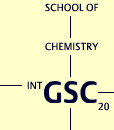 |


![]()
Name:
Xuan He
Diploma / M.Sc degree:
McMaster University, China
(May 2013)
PhD Project:
Electrochemistry and interfacial stability of various lithium conducting electrolytes in contact with lithium metal electrodes for high energy density lithium batteries
Abstract of Research Project
Lithium-ion batteries are considered as central promising rechargeable energy storage devices with chances to reach much higher energy densities during future materials development.[1] One of the key questions is whether one can replace the standard graphite anodes of current lithium ion cells by a new higher energy density anode material. Lithium metal is one of the candidates exhibiting a theoretical charge capacity of about 3860mAhg-1, which is a factor of 10 higher as compared to 372mAhg-1 of graphite anodes.[2]
During charging in liquid electrolytes, however, lithium is not deposited homogeneously. The local current density is greatly enhanced at protrusions on the metal surface leading to preferential dendrite formation[3] and accompanying surface roughening during charging/recharging cycles. All this causes serious safety problems with conventional liquid electrolytes.
Therefore, in this PhD project, the choice of appropriate electrolytes such as polymer electrolytes, ionic liquids, solid lithium ion conductors or hybrid systems of these is considered as the key to use lithium metal as the negative electrode. An emphasis will be put on an electrochemical study of the interface kinetics between electrolyte and lithium metal, of the conditions for a suppression of dendrite formation and the role of the chosen electrolyte and its properties. A series of electrochemical techniques (e.g. impedance spectra, transference number measurements, current-voltage curves, cyclic voltammetry) and analytical techniques (e.g. SEM, AFM) will be applied to reveal the mechanisms of lithium deposition and dissolution as well as the formation of protecting reaction layers (Solid Electrolyte Interphase = SEI). Hence, this project should contribute to understand and improve the stability of lithium metal as negative electrode by careful design of interface and electrolyte.
Reference
(1) Whittingham MS, M. Stanley. Chemical Reviews 104 (10): p. 4271–4301.
(2) Tarascon, J.-M.; Armans, M. Nature 2001, 414:p. 359
(3) Daniel, TH, Scott AM. Journal of the Electrochemical Society 2013, 160:p. 464-470